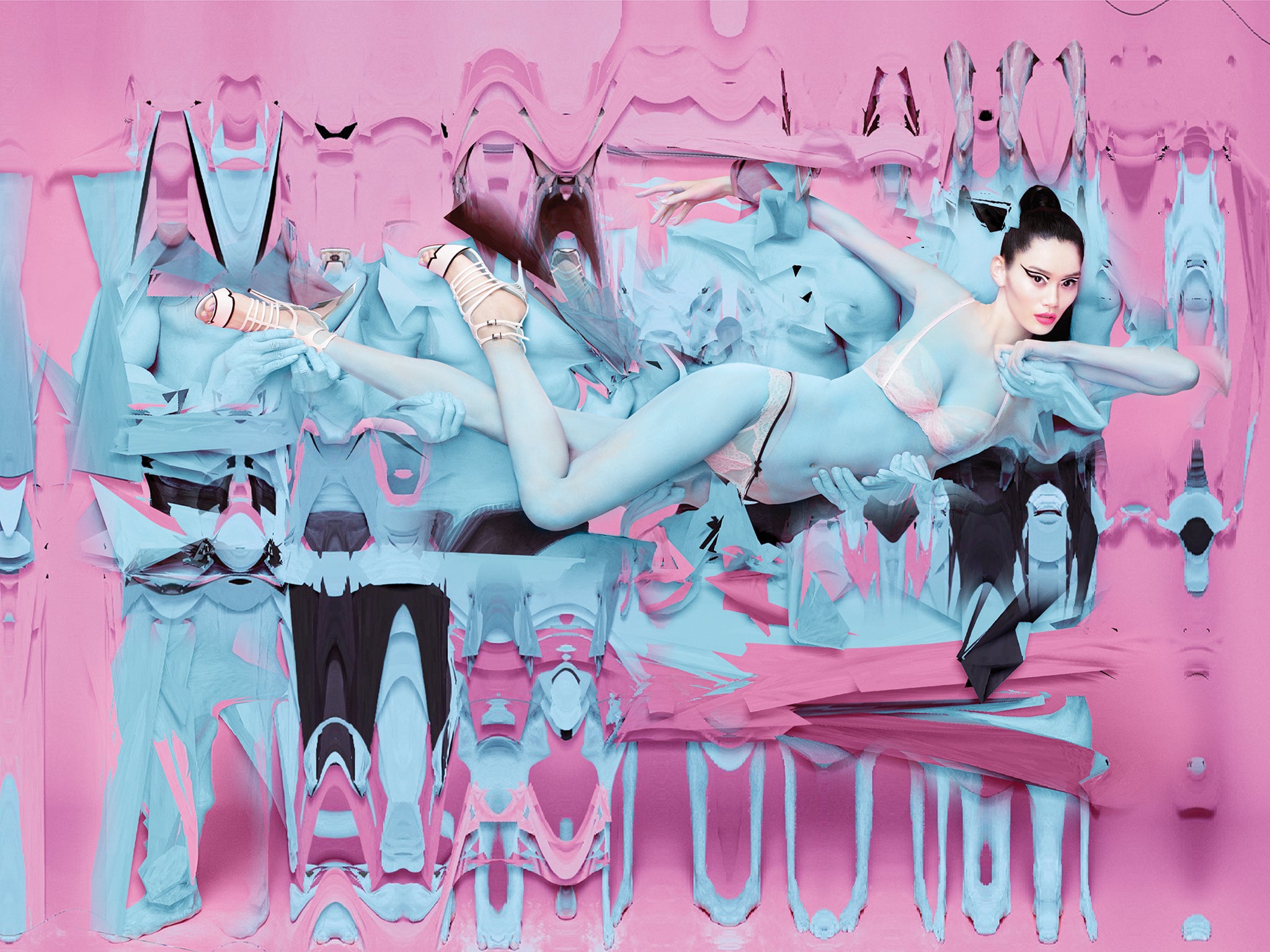Can Nick Knight and Victoria's Secrets models modernise the pin-up calendar?
Photographing Victoria's Secret models for '10' magazine, Nick Knight has produced a pin-up calendar to 'empower' women. Alexander Fury asks if it lives up to the claims

Following a menswear fashion week where Rick Owens literally exposed his male models' underpinnings on the catwalk (no underwear plus short tunics is an easily followed recipe for sausage casserole), and an haute couture week of female models by-and-large demurely clothed, the politics of "the gaze" interests me afresh.
In his seminal 1972 book, Ways Of Seeing, the critic John Berger said that "men act and women appear. Men look at women. Women watch themselves being looked at." I get the idea, but I'm not sure how much I agree. It's a thought I frequently ponder at fashion shows, mostly because I am the only male fashion editor at a British newspaper, and hence feel something of an interloper. As a man, I undoubtedly gaze differently at, say, a powder-pink ball gown the size of a Ford Cortina, by Giambattista Valli. I would never wear the thing, not even in the privacy of my own home.
But when the models on show aren't wearing much clothing at all, does that gendered gaze become something different? That's a question that's been raised recently, with The Sun's fake dropping of its Page3 "stunners". Was all that fuss just for the use of a witless "Mammary Lapse" pun? Or did the editors genuinely consider dropping the publication's 45-year tradition of going topless on the first right-hand page?
Naked flesh doesn't always have to be titillating. And it isn't always aimed at men. Take Victoria's Secret: the US brand's lavish, lingerie-focused annual fashion show which is annually seem by some 500 million global viewers, is the most watched fashion event in the world. "For every four men that watch the show, six women watch it," says Ed Razek, the label's senior creative. "In the past, I would get questions from reporters who thought it was put on so that guys could get kegs of beer and sit around at frat parties. But the show is positioned to endear to women… they're passionate about the show."
One woman especially passionate about it is Sophia Neophitou, the stylist who acts as the collection's creative consultant. She comes up with the ideas, devises spectacular stage outfits for the models, dubbed "Angels," and generally gets very worked up about pants. She has also worked with Nick Knight, the fashion photographer, to photograph a dozen "Angels" for a special issue of her magazine, 10. Next month, it will be published in a choice of 12 covers – the idea being, she says, to create a modern pin-up calendar, with an Angel for every month.
Knight has done something similar before. When recruited to shoot the Pirelli Calendar for 2004, he shifted the focus from men's desires to those of women, including Björk, Catherine Deneuve, Courtney Love and Heidi Fleiss. None of the said womens' fantasies were tied to their name, but they formed the basis for Knight's imagery, created in collaboration with Peter Saville, the graphic designer, and a great wodge of Photoshop. With bodies twisted in psychotropic fields of poppies or suburban threesome scenarios, the resulting images were distorted and blurred, their identities masked like their authors', until they occupied an aesthetic zone halfway between Razzle and a Rorschach test. For 10, he and Neophitou chose sexual clichés – from fishnets, to milk baths, to the biting teeth of fashionable vampiroticism – to twist for each of their images.
"As a woman, what I want to project is a sense of empowerment," states Neophitou. "At no point do I want her to feel like a victim of the predictability of a man's vision of a woman."
Like Page 3, however, this has provoked ire and controversy, most recently in November, when its use of the tagline "The perfect 'body'," alongside images of the by and large unattainable physiques of a clutch of Angels, was used to promote a brassiere line dubbed "Body". It prompted social media protests, an online petition and resulted in the company changing the slogan to "A Body for Everyone".
Knight's advocacy of retouching, at least on paper, could elicit similar responses. "I don't see why taking a pimple off somebody's nose or changing their eye colour or elongating their body or anything else, is wrong," he states. And his 10 magazine covers are digitally manipulated to the nth degree – albeit to make them physically impossible, rather than perfect.
"Supermodel" is the word Neophitou uses, again and again, to describe her perfect 10 cover stars. "They're the modern-day supermodels… they are like superwomen. These girls are so committed, and in control, and decisive."
And, ultimately, to return to that concept of the gazed at, those supermodels are selling smalls – and, in this case, magazines – to ordinary women everywhere. Case in point: 10 is a fashion magazine that shifts close to 100,000 issues each quarter, and Victoria's Secret's yearly revenue totals £4.2bn. The takeaway? Sex does sell. And not just to men.
The new edition of '10' will be on sale from 5 February, priced £6
Join our commenting forum
Join thought-provoking conversations, follow other Independent readers and see their replies
Comments